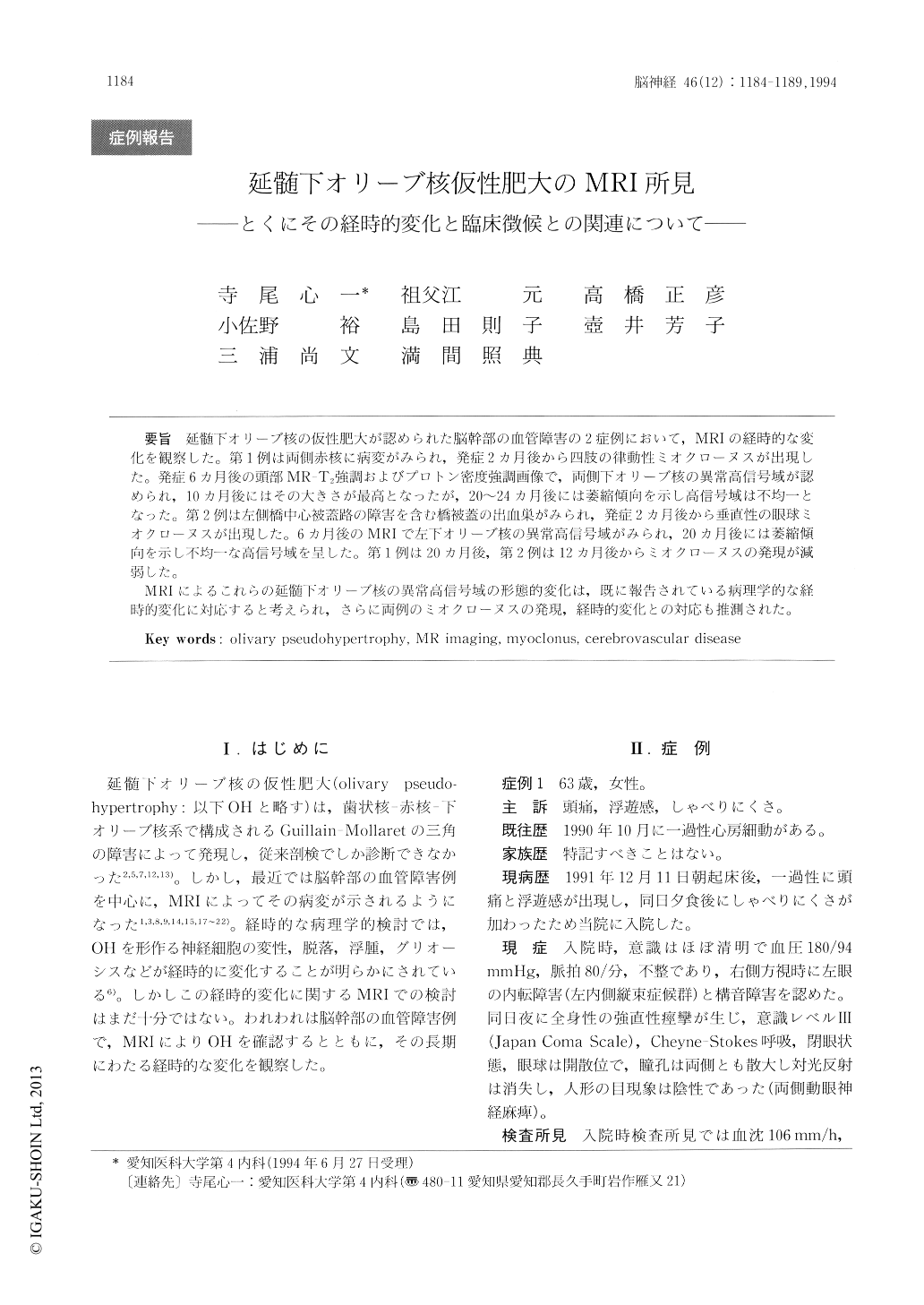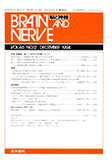Japanese
English
- 有料閲覧
- Abstract 文献概要
- 1ページ目 Look Inside
延髄下オリーブ核の仮性肥大が認められた脳幹部の血管障害の2症例において,MRIの経時的な変化を観察した。第1例は両側赤核に病変がみられ,発症2ヵ月後から四肢の律動性ミオクローヌスが出現した。発症6ヵ月後の頭部MR-T2強調およびプロトン密度強調画像で,両側下オリーブ核の異常高信号域が認められ,10ヵ月後にはその大きさが最高となったが,20〜24ヵ月後には萎縮傾向を示し高信号域は不均一となった。第2例は左側橋中心被蓋路の障害を含む橋被蓋の出血巣がみられ,発症2ヵ月後から垂直性の眼球ミオクローヌスが出現した。6ヵ月後のMRIで左下オリーブ核の異常高信号域がみられ,20ヵ月後には萎縮傾向を示し不均一な高信号域を呈した。第1例は20ヵ月後,第2例は12ヵ月後からミオクローヌスの発現が減弱した。
MRIによるこれらの延髄下オリーブ核の異常高信号域の形態的変化は,既に報告されている病理学的な経時的変化に対応すると考えられ,さらに両例のミオクローヌスの発現,経時的変化との対応も推測された。
Olivary pseudohypertrophy (OH) and its chrono-logical change was examined by MR images in two patients with brainstem vascular disease.
Patient 1 was a 63-year-old woman who develo-ped an infarction in the red nuclei associated with "top of the basilar" syndrome. Two months later, she showed 2-4 c/s rhythmic myoclonus (rubral tremor) involving four extremities. Palatal myo-clonus was absent. MR images of the inferior olives did not demonstrate a significant lesion in 10 days after the onset, but showed OH in 6 months, and then their size attained a maximum in 10 months after.

Copyright © 1994, Igaku-Shoin Ltd. All rights reserved.


